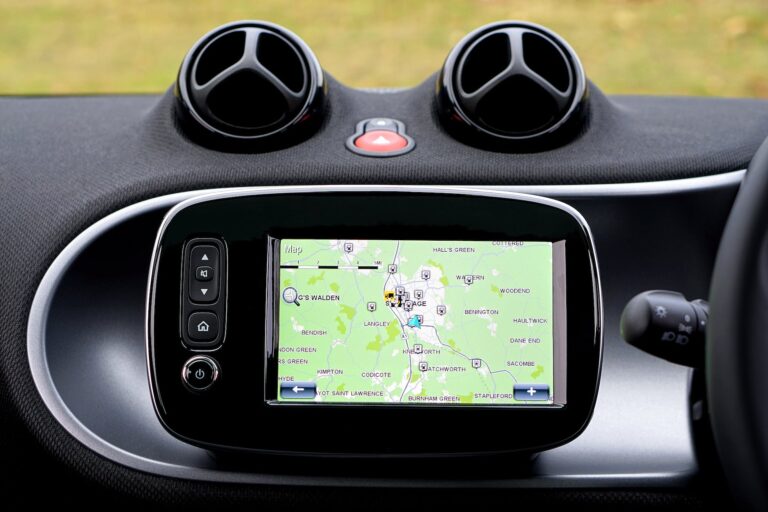Streamlining Automotive Operations
Efficient and effective dealer management is crucial for the success of automotive businesses. With the constant demand and intricacies involved in running a car dealership, it’s essential to have the right systems in place to streamline operations. One such system that has become increasingly popular is the Automotive Dealer Management System.
The Importance of Effective Dealer Management
Effective dealer management is the cornerstone of a well-run automotive business. It involves overseeing various aspects of the dealership, including inventory management, sales and customer relationship management, accounting and finance, and reporting and analytics.
By implementing effective dealer management practices, dealerships can enhance their operational efficiency, improve customer experience, and drive profitability. This is achieved by optimizing processes, reducing manual work, and enabling data-driven decision-making.
Introduction to Automotive Dealer Management Systems
An Automotive Dealer Management System (ADMS) is a comprehensive software solution designed specifically for car dealerships to manage their day-to-day operations efficiently. These systems integrate different functions and automate processes, providing a centralized platform for managing various aspects of dealership operations.
ADMS offers a range of features and functionalities tailored to meet the unique needs of automotive businesses. From inventory management and sales to accounting and reporting, these systems provide a holistic solution to streamline operations and enhance productivity.
By leveraging an ADMS, dealerships can gain valuable insights into their inventory, sales performance, and financial health. This helps them make informed decisions, improve customer service, and drive growth.
To learn more about specific features and functionalities offered by ADMS, refer to our articles on automotive inventory management software, auto dealer accounting software, and automotive sales software.
By embracing the power of an Automotive Dealer Management System, car dealerships can optimize their operations, eliminate inefficiencies, and stay ahead in the competitive automotive industry. In the following sections, we will explore the key features, benefits, and considerations for implementing an ADMS.
Key Features of Automotive Dealer Management Systems
Automotive Dealer Management Systems (DMS) are comprehensive software solutions designed to streamline and optimize the operations of car dealerships. These systems offer a wide range of key features that help dealerships effectively manage their business processes. Let’s explore some of the essential features found in automotive DMS:
Inventory Management
Inventory management is a critical component of any automotive dealership. A robust DMS provides tools and functionalities to efficiently manage vehicle inventory. From tracking vehicle details and specifications to monitoring stock levels and managing vehicle pricing, the inventory management feature ensures accurate and up-to-date information about the vehicles in stock. This allows dealerships to make informed decisions regarding vehicle procurement, pricing strategies, and sales promotions.
Sales and Customer Relationship Management
Efficient sales and customer relationship management are vital for the success of any dealership. Automotive DMS offers features that facilitate the entire sales process, from lead generation to closing deals. These systems enable sales teams to track customer information, manage sales opportunities, and automate follow-up tasks. By centralizing customer data, dealerships can provide personalized experiences, improve customer satisfaction, and foster long-term relationships.
Accounting and Finance
Accurate financial management is crucial for the smooth operation of automotive dealerships. Automotive DMS includes accounting and finance features that simplify financial tasks such as invoicing, billing, and financial reporting. These systems allow dealerships to track revenue, expenses, and profits, ensuring compliance with financial regulations. By automating financial processes, automotive DMS reduces manual errors and improves overall financial accuracy.
Reporting and Analytics
To make informed business decisions, dealerships need access to insightful data and analytics. Automotive DMS integrates robust reporting and analytics features that generate comprehensive reports on various aspects of dealership operations. These reports provide valuable insights into sales performance, inventory turnover, customer trends, and more. By analyzing this data, dealerships can identify areas for improvement, optimize processes, and drive business growth.
The key features of automotive dealer management systems discussed above are just a glimpse into the capabilities of these powerful software solutions. Dealerships can choose from a variety of DMS options based on their specific needs and requirements. When selecting an automotive DMS, it’s essential to consider factors such as integration capabilities, support services, and scalability. By leveraging the features of an automotive DMS, dealerships can streamline their operations, enhance customer experiences, and achieve greater success in the highly competitive automotive industry.
Benefits of Implementing an Automotive Dealer Management System
Implementing an automotive dealer management system can provide numerous benefits for car dealerships, ranging from increased efficiency and productivity to improved financial management and accuracy. Let’s explore some of the key advantages that come with harnessing the power of a dealer management system.
Increased Efficiency and Productivity
One of the primary benefits of implementing an automotive dealer management system is the significant increase in efficiency and productivity it brings to the dealership operations. With a comprehensive system in place, tasks such as inventory management, sales tracking, and customer relationship management can be streamlined and automated. This eliminates the need for manual, time-consuming processes, allowing staff to focus on more critical aspects of the business.
By centralizing data and automating repetitive tasks, a dealer management system reduces errors and eliminates duplicate work, ultimately saving time and resources. It also provides real-time visibility into inventory levels, sales performance, and other key metrics, enabling the dealership to make informed decisions quickly.
Enhanced Customer Experience
In today’s competitive automotive market, providing an exceptional customer experience is crucial for success. A dealer management system plays a vital role in enhancing the customer experience throughout the buying journey. With features such as customer relationship management (CRM) and integrated communication tools, the system enables seamless interactions and improved customer service.
The CRM functionality allows dealerships to track customer interactions, manage leads, and personalize communication. This helps build stronger relationships with customers, leading to increased loyalty and repeat business. Additionally, an automotive dealer management system can provide automated reminders for service appointments and follow-ups, ensuring that customers receive timely and personalized attention.
Improved Financial Management and Accuracy
Accurate financial management is essential for the success and growth of any dealership. An automotive dealer management system simplifies financial processes by automating accounting tasks, such as invoicing, accounts payable, and financial reporting. This reduces the chances of errors and improves the accuracy of financial data.
By integrating with other systems, such as inventory management and sales tracking, a dealer management system provides real-time insights into the financial health of the dealership. This visibility allows for better decision-making, improved cash flow management, and enhanced profitability.
Streamlined Operations and Workflow
A well-implemented automotive dealer management system streamlines operations and improves workflow across the dealership. By centralizing data and automating processes, it eliminates duplication of effort and reduces the risk of miscommunication between departments.
From inventory management to sales tracking and reporting, all aspects of the dealership’s operations are seamlessly integrated into a single system. This ensures that everyone in the dealership has access to accurate and up-to-date information, facilitating collaboration and enabling more efficient decision-making.
In summary, implementing an automotive dealer management system brings a multitude of benefits to car dealerships. It increases efficiency and productivity, enhances the customer experience, improves financial management and accuracy, and streamlines operations and workflow. By investing in a robust dealer management system, dealerships can optimize their operations and stay ahead in a competitive automotive market.
Choosing the Right Automotive Dealer Management System
When it comes to selecting the most suitable automotive dealer management system, it’s important to consider your specific needs and requirements. This section will guide you through the key steps to help you make an informed decision.
Assessing Your Specific Needs
Before diving into the vast array of available automotive dealer management systems, take the time to assess your dealership’s specific needs and pain points. Consider the size of your dealership, the number of employees, and the volume of transactions you handle on a regular basis. Identify the key areas where you require improvement, such as inventory management, sales and customer relationship management, accounting and finance, and reporting and analytics.
By understanding your specific needs, you can narrow down the options and focus on systems that offer the features and functionality that align with your requirements.
Evaluating Features and Functionality
Once you have a clear understanding of your dealership’s needs, it’s time to evaluate the features and functionality offered by different automotive dealer management systems. Look for software that provides comprehensive inventory management capabilities to efficiently track and organize your vehicle inventory. This includes features like automatic updates, vehicle history tracking, and integration with third-party platforms. For more information on automotive inventory management, check out our article on automotive inventory management software.
Another crucial aspect to consider is sales and customer relationship management. Look for a system that streamlines the sales process, manages customer information, and enables effective communication with potential buyers. This will help enhance the overall customer experience and improve customer retention. For more details on automotive sales software, visit our article on automotive sales software.
Accounting and finance functionalities are essential for maintaining accurate financial records and ensuring compliance. Look for an automotive dealer management system that offers robust accounting and finance features, such as expense tracking, invoicing, and financial reporting. This will help streamline your dealership’s financial management processes. For more information on automotive accounting software, refer to our article on automotive accounting software.
Considering Integration and Support
When selecting an automotive dealer management system, it’s crucial to consider integration capabilities and ongoing support. Look for a system that can seamlessly integrate with other software solutions you currently use, such as CRM systems or ERP software. This will help ensure smooth data flow and minimize the need for manual data entry. For more information on automotive ERP software, check out our article on automotive ERP software.
Additionally, consider the level of support provided by the software vendor. Ensure they offer reliable customer support, including training resources, documentation, and responsive technical assistance. This will be crucial during the implementation process and for ongoing system maintenance.
By carefully assessing your specific needs, evaluating features and functionality, and considering integration capabilities and support, you can choose an automotive dealer management system that aligns with your dealership’s requirements.
Implementing an Automotive Dealer Management System
To fully harness the power of an Automotive Dealer Management System (DMS), a systematic approach to implementation is crucial. This section will guide you through the key steps involved in implementing an Automotive DMS, including planning and preparation, training and adoption, and monitoring and continuous improvement.
Planning and Preparation
Before implementing an Automotive DMS, it is essential to carefully plan and prepare for a smooth transition. This involves assessing your specific needs and requirements, defining your goals and objectives, and identifying any potential challenges or risks.
During the planning phase, consider conducting a thorough needs assessment to accurately determine the functionalities and features required for your dealership. This assessment should take into account aspects such as inventory management, sales and customer relationship management, accounting and finance, and reporting and analytics. Our article on automotive inventory management software provides further insights into this specific area.
Additionally, ensure that you evaluate the compatibility and integration capabilities of the DMS with other software systems you currently use. Seamless integration with existing tools can enhance efficiency and streamline operations. For example, consider the integration of automotive accounting software to manage financial aspects of your dealership. You can learn more about this topic in our article on automotive accounting software.
Training and Adoption
To maximize the benefits of an Automotive DMS, training and adoption are crucial components of the implementation process. Provide comprehensive training to your staff members to ensure they understand the system’s functionalities and how to effectively utilize them.
Training should cover various aspects, including navigating the system, inputting and retrieving data, generating reports, and utilizing specific features relevant to each department. Encourage employees to actively participate in the training process and address any concerns or questions they may have.
Emphasize the importance of a smooth transition and encourage staff members to embrace the new system. Foster an environment that promotes learning and offers ongoing support to ensure a successful adoption process. Our article on car dealership software can provide additional insights into the benefits of utilizing software programs in a dealership setting.
Monitoring and Continuous Improvement
After the implementation of an Automotive DMS, it is crucial to continuously monitor its performance and seek opportunities for improvement. Regularly evaluate the system’s effectiveness and gather feedback from your team members to identify any areas that require refinement.
Monitor key performance indicators (KPIs) such as efficiency, productivity, customer satisfaction, and financial management. This data can provide valuable insights into the system’s impact on your dealership’s operations. Use the reporting and analytics capabilities of the DMS to generate reports and analyze trends. Our article on automotive erp software dives deeper into the importance of analytics in automotive management.
Encourage open communication with your staff members to gather their feedback and suggestions for improvement. Actively involve them in the process of optimizing the system and addressing any challenges or issues that may arise.
By following these implementation steps, you can ensure a successful integration of an Automotive DMS into your dealership’s operations. Remember that ongoing monitoring and continuous improvement are essential for maximizing the benefits of the system and staying ahead in the competitive automotive industry.







